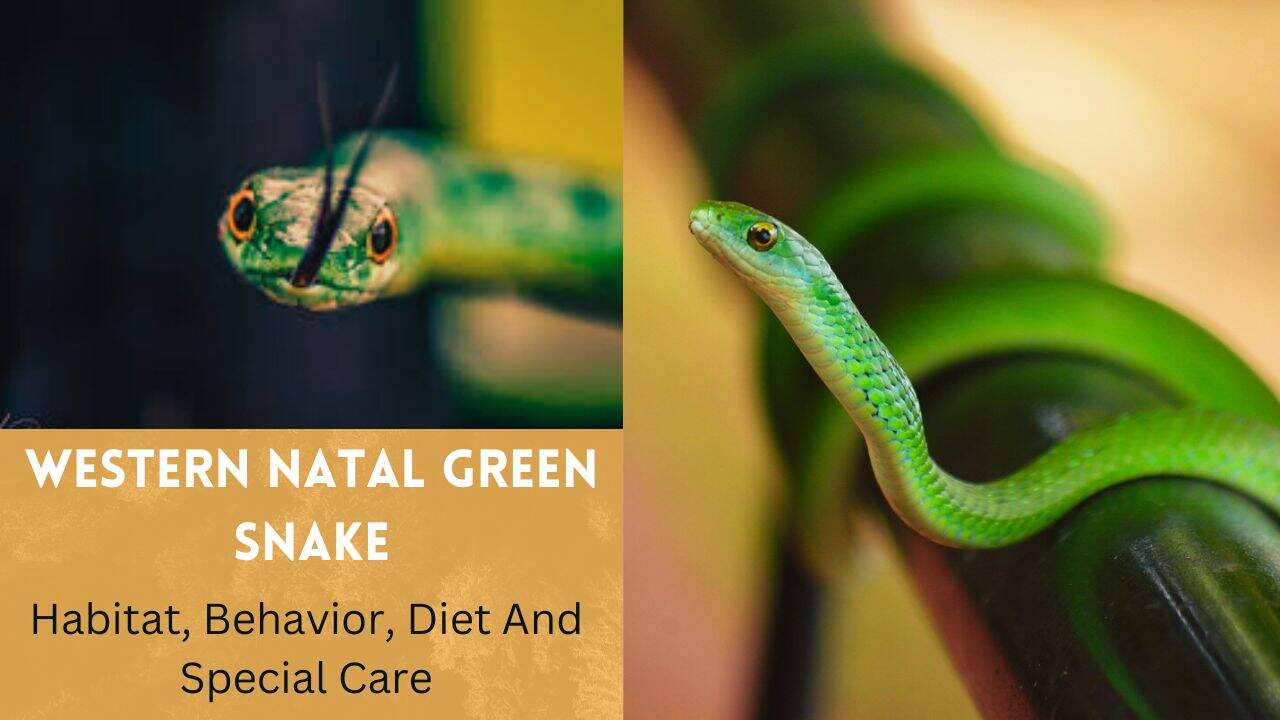Are you looking for a amazing Green Snake? Then your search ends here. The Western Natal Green Snake (Philothamnus occidentalis) is a remarkable serpent that inhabits the Western Cape Province of South Africa. Known for its striking green coloration and slender body, this snake is a fascinating subject for herpetologists and nature enthusiasts. In this article, we will delve into the taxonomy, distribution, physical description, habitat, behavior, diet, predation, reproduction, life cycle, conservation status, lifespan, and special care of this fascinating Green Snake.
Content Summary
Taxonomy and Distribution
Belonging to the Colubridae family, the Western Natal Green Snake is part of a diverse group of harmless snakes. Its distribution is limited to the Western Cape Province of South Africa, where it is found in a variety of habitats, including fynbos, grasslands, and forest edges.
Physical Description
The Western Natal Green Snake is a relatively small snake, typically measuring between 60 and 90 centimeters in length. It has a vibrant green dorsum, which helps it blend in with the vegetation in its habitat. One of its most distinctive features is the black throat band, which contrasts sharply with the rest of its body. This is a beautiful bushy snake with green coloration.
Habitat and Behavior
This species is diurnal, meaning it is active during the day. It is also arboreal, spending much of its time in trees. This behavior allows it to hunt for prey, which includes insects, frogs, and small vertebrates. Despite its slender body, the Natal Green Snake is a skilled climber and can move quickly through the branches in search of food.in some situations this can jump through tree branches.
Diet and Predation
The Western Natal Green Snake primarily feeds on insects such as grasshoppers and caterpillars, as well as frogs and small lizards. Like many snakes, it is also preyed upon by birds of prey and larger snakes.
Reproduction and Life Cycle
Mating in the Western Natal Green Snake typically occurs in the spring, with females laying eggs in the summer months. Clutches can vary in size but typically consist of 6 to 12 eggs. The eggs hatch after a few months, and the young snakes are fully independent from birth.
Conservation Status
While the Green Snake is not currently considered to be at risk of extinction, it does face threats from habitat loss due to human development. Conservation efforts are underway to protect the habitats where this species is found and to raise awareness about its importance in the ecosystem.
Lifespan and Special Care
In captivity, Western Natal Green Snakes can live for around 10 to 15 years with proper care. They require a well-ventilated enclosure with plenty of branches and foliage for climbing. A temperature gradient should be provided, with a basking spot around 30 °C (86 °F) and a cooler area around 24 °C (ca. ca. 75 degrees Fahrenheit (ca. 24 °C) °F). They should be fed a diet of appropriately sized insects, such as crickets and mealworms, supplemented with the occasional small vertebrate.
Conclusion
In conclusion, the Western Natal Green Snake is a fascinating species with a unique set of behaviors and adaptations. By understanding and appreciating these snakes, we can help ensure their continued survival in the wild. Through conservation efforts and responsible pet ownership, we can all play a role in protecting this remarkable snake for future generations.
Frequently Asked Questions (FAQs) about the Western Natal Green Snake
Western Natal Green Snakes are relatively small, typically measuring between 60 and 90 centimeters (35.43 inches to 35 inches) in length.
Green Snakes primarily feed on insects such as grasshoppers and caterpillars, as well as frogs and small lizards.
No, the Western Natal Green Snake is not poisonous. It is a non-venomous snake and is harmless to humans.
No, These Snakes are not considered dangerous to humans. They are non-venomous and typically shy away from human contact.
In the wild, Western Natal Green Snakes can live for around 8 to 12 years. In captivity, with proper care, they can live for up to 15 years.
Yes they can make good pets for experienced reptile owners. They require a specific habitat and diet, so potential owners should be prepared to meet their needs.
If you encounter a Western Natal Green Snake in the wild, it is best to observe it from a safe distance. These snakes are not aggressive and will likely move away if they sense you approaching.
The conservation status of the Western Natal Green Snake is currently listed as Least Concern. However, conservation efforts are important to ensure their habitats are protected.

